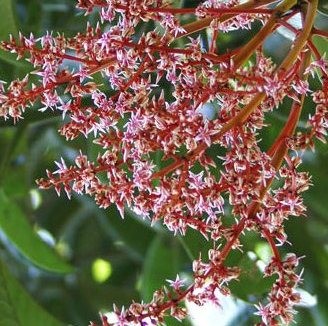Binjai
(Mangifera caesia)

Description
Mangifera caesia is a species of flowering plant in the cashew family, Anacardiaceae. Common names include jack, white mango, binjai (Malay language), wani (Balinese language), yaa-lam (Thai language), bayuno/baluno/belunok (Filipino language) and mangga wani (Cebuano language). It belongs to the same genus as the mango and is widely cultivated in areas of Indonesia, Malaysia, Singapore, Brunei, Papua New Guinea and the Philippines. It was featured in Malaysian stamp, printed in 27-Feb-1999 under rare fruits series stamp.These are restricted to wet lowlands at below 450m. It requires rainfall and is rarely in found forests but rather abundant in marshes and riverside areas. Grows up to 30 m (98 ft) tall with a dense crown of round-shaped leaves. The flowers are purple or pink, 0.7 cm long with five sepals. The fruit is a large, edible, elliptical drupe 10–15 cm (4–6 in) long and 6–8 cm (2.5–3 in) wide. The skin is thin and brown with darker patches, and the flesh is yellow-white, mushy, and strongly odorous with an acid-sweet or sour taste. The binjai is believed to originate from the island of Borneo, but is commonly grown elsewhere for its edible fruit. The tree is one of the most common and valuable Mangifera species in western Malaysia, where it is cultivated extensively in orchards. It is also widely grown in Bali, Sumatra, and Borneo.
Taxonomic tree:







